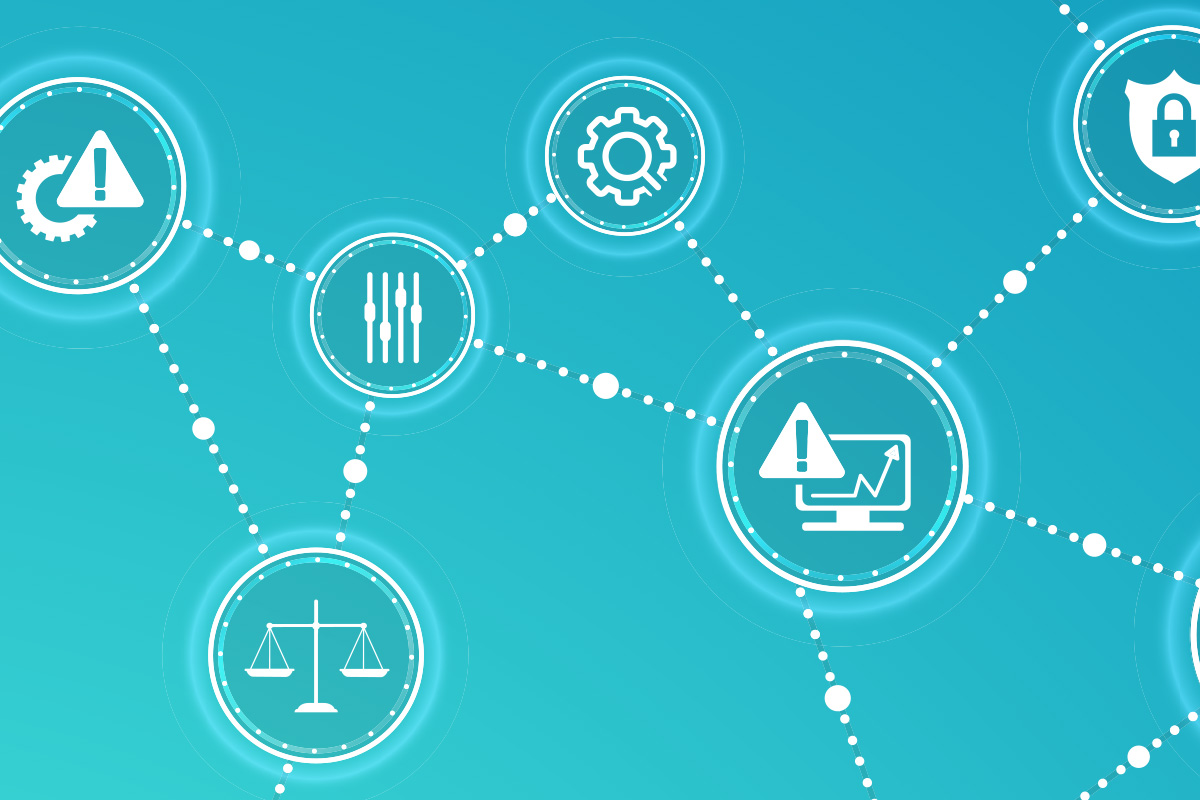Risk intelligence is the process of gathering information to identify risks. Information on potential risks can help companies recognize challenges that could compromise success. This process means discovering risks, identifying their likelihood, and taking proactive steps to eliminate them.
Risk intelligence affects every form of risk management. It can help companies avoid risk entirely or minimize loss after a risk takes place.
Companies can also use risk intelligence to align their business strategy. Organizations can minimize disruptions and better allocate resources before risks materialize.
Elements of Risk Intelligence
Risk intelligence is made of several factors. These elements each play a critical role in helping organizations identify and manage risks.
Here are the main elements of risk intelligence:
- Risk identification: Diagnosing and collecting information on factors that could create risk.
- Risk assessment: Gauging the likelihood that a risk might occur. It involves analyzing risk probabilities and the potential consequences that might follow.
- Risk prioritization: Categorizing each risk in order of importance. It involves organizing risks based on their importance to the organization.
- Risk mitigation: Implementing strategies that reduce the likelihood of a risk occurring. It involves implementing regulations, developing contingency plans, or transferring risk.
- Risk monitoring: Reviewing the effectiveness of risk management activities. It involves tracking risk indicators and evaluating the overall risk management process.
- Risk communication: Sharing information about risks with company stakeholders. It involves outlining risks and management strategies for investors, executives, and other interested parties.
Together, these and other factors help companies develop a better understanding of their risk landscape.
Why is Risk Intelligence Important?
Risk intelligence is a crucial part of operational risk management. Companies that use the risk identification and analysis process can improve their ability to identify and respond to risks. This is particularly important when even a single risk could compromise a company's success.
Companies use several methods to collect data on the risks they face. They might use an internal data analysis, website audit, external research, or insight from stakeholders or experts. Gathering insight from several sources provides a wide perspective on challenges a company might face.
Every business should take steps to analyze the information they find. Assessing collected data — through methods like risk mapping and trend analysis — can provide new insights into each potential risk. These insights allow companies to consult data when developing a risk management strategy.
Necessary Skills for Effective Risk Intelligence
Risk intelligence involves identifying and analyzing challenges that companies face. This helps all company employees understand business risks and how they should manage them.
Risk managers need hard skills in data analysis, risk modeling, and knowledge of statistics. These skills provide valuable insight into the specifics of each risk. Soft skills like communication and teamwork are also valuable in a risk analysis environment. They help risk managers distribute valuable knowledge to stakeholders and internal team members.
NHow is Risk Intelligence Collected?
Collecting risk intelligence is not a one-time task. For best results, companies should continually collect and analyze new information over time. This means regularly monitoring risks in ways that can help your company adapt to new circumstances.
Here are some techniques companies use to collect risk intelligence:
- Risk assessments: Identifying, evaluating, and prioritizing risks that could impact company operations, success, and growth.
- Incident reporting: Documenting and analyzing company incidents to identify trends in risk-based data.
- Benchmarking: Comparing a company’s risk management to best practices shared across the industry.
- Systematic audits: Reviewing a company’s risk management processes and identifying areas for change or improvement.
- Expert interviews: Conducting interviews with subject matter experts to gain further insight into potential risks and mitigation strategies.
Risk management software can help streamline these processes. The right risk management program helps companies save time when collecting, analyzing, and reporting risks.
Tips for Implementing a Successful Risk Intelligence Strategy
Successful risk intelligence requires a systematic, structured approach. For the best results, take a look at the following steps for an organized approach.
Define Objectives
The first step in implementing a risk intelligence strategy is defining your objectives. This means identifying the goals of your program and creating a roadmap that helps you accomplish them.
Defining your objectives is important for several reasons. It provides clarity on what the program should achieve. It also guides company decision-making, particularly for employees responsible for measuring program success. Identifying your goals is also the first step in ensuring that company resources are used effectively.
Identify Relevant Information Sources
Not all information on risk is created equal. The best risk intelligence strategies use relevant, reliable information sources. There are several ways to identify relevant information sources and avoid irrelevant data.
First, determine the scope of your program. This includes the type of risks you might face and the stakeholders you will report to. Next, review all internal and external data sources. These often include incident reports, audits, and risk maps. This information can help identify areas where risks were stopped, slowed, or managed effectively.
Monitor and Assess Risks
Businesses change over time. Continuous risk monitoring helps your company identify any new or emerging risks. It can also shed light on how familiar risks evolve.
Ongoing risk monitoring also helps to keep your company flexible. It allows your entire company to respond more quickly when risk appears. Active risk monitoring can also help your company maintain compliance with all newly-developed risk regulations.
Use Technology
Risk intelligence is a complicated field. Many companies use software to create a faster, more accurate risk strategy. The same software can also help educate employees on current best practices around risk management.
Many software programs help risk managers perform tasks more efficiently. For example, risk analytics software can analyze large sets of data at high speeds. They also highlight trends that employees might not find. Some risk management programs also use AI algorithms to identify patterns in purchase habits, website visits, customer feedback, and other data.
Common Risk Intelligence Issues to Avoid
Risk intelligence is an important step in the risk management process. However, it can also lead to some challenges. If companies don’t over these challenges, they can still experience loss even if they gather and analyze information correctly.
Many companies rely too much on data and statistical models when compiling risk intelligence. While data analytics is a powerful tool, it also features some limitations. For example, some companies might not have sufficient historical data to draw sufficient conclusions. An over-reliance on data can create an incomplete analysis and lead to a false sense of security.
Companies can overcome an overreliance on data by relying equally on data and context. This means combining quantitative and qualitative data to achieve better risk intelligence.
Other companies can underestimate new and emerging risks. This can occur for several reasons, including a lack of awareness and organizational silos. Organizations can focus too much on current risks, without paying attention to new threats that might be around the corner.
Companies can use several strategies to remain aware of new threats. Many organizations use automated tools that accelerate the risk assessment process. These programs can help your company maintain a forward-looking perspective. They help protect your operations, reputation, employees, and financial performance from loss created by unforeseen risks.










